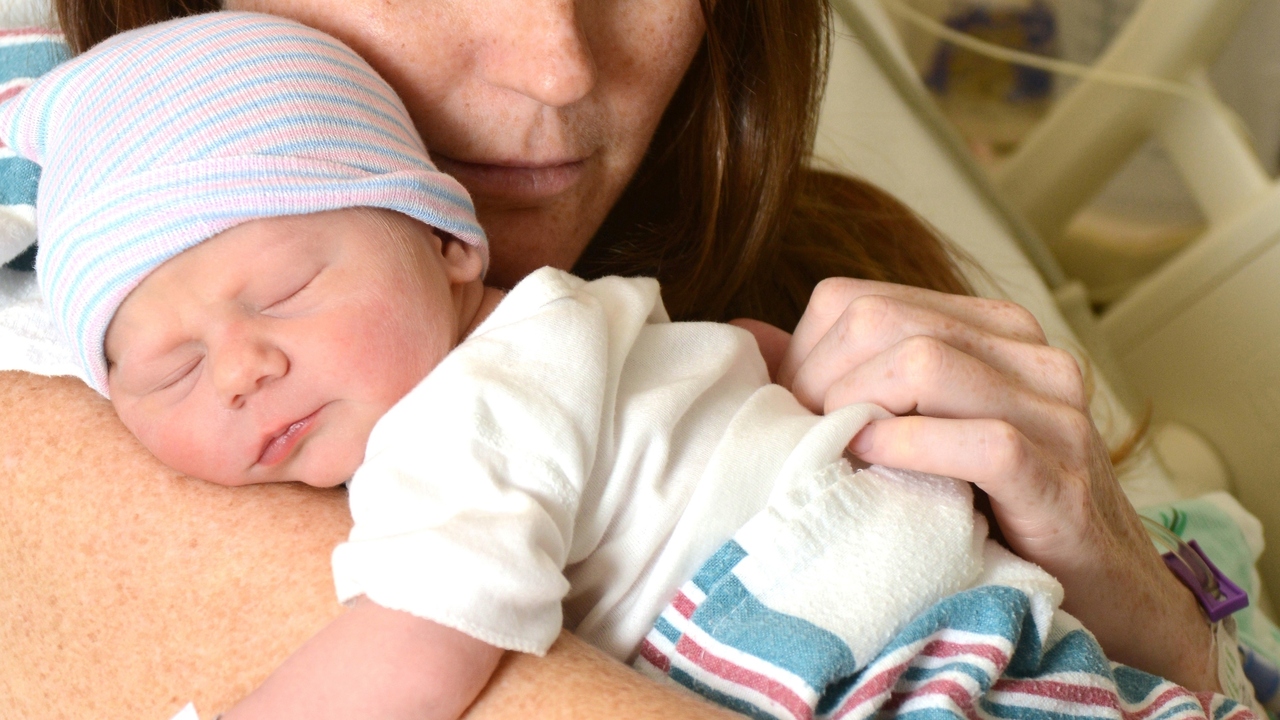 Beth Swanson/PhotoSpin
Beth Swanson/PhotoSpin
A high risk for asthma symptoms is linked with preterm birth, and that risk remains high throughout childhood. What happens to the adults who were once preemies? Does their asthma risk remain the same, or does it change?
Babies who are born before 37 weeks gestation are more prone to asthma and other respiratory problems. Fortunately, as these children reach adolescence, their risk of asthmatic symptoms has decreased.
According to a Danish study, when they reach adulthood their risk is not appreciably higher (about 0.3 percent difference) than that of people who were born full term.
Research from the University of Copenhagen,Denmark looked at gestational age and respiratory issues during the first month after birth of 1.8 million Danes who had been born between 1980 and 2009. Each participant was tracked from birth to age 31.
Information gathered about asthma medication purchases from 2010-2011 was also used.
The study was published in PLOS One.
Lead author Dr. Anne Louise Damgaard, a researcher at the University of Copenhagen, said that past 31 years of age however, it's unclear as yet as to whether or not differences between those who were premature and those who were full-term will emerge later.
Babies in the study who were born between 23 and 36 weeks gestation were considered to be premature. Babies who were born between 37 and 42 weeks were considered to be full-term. It was not uncommon for preemies to experience respiratory difficulties.
Even so, generally respiratory support is only needed for a few days or a few weeks after birth. By the time they reach what would have been full term for them, for the most part, respiratory problems are negligible.
Asthma affects the lungs by inflaming and narrowing the airways (tubes that allow air to move in and out of the lungs).
Muscles around the airways tighten, so that less air gets into the lungs. Mucus is manufactured more than usual, which can make airways even narrower.
Coughing, shortness of breath, tightness in the chest and wheezing are the identifying symptoms.
The possible causes for a premature birth are many. Sometimes the cause is known, other times the reason will remain a mystery.
If the mother has bleeding abnormalities, gestational diabetes, heart issues, infections of various kinds, kidney problems, a delivery that is too early may result.
A baby may be born prematurely if its mother smokes or drinks alcohol while pregnant, or if her diet is exceptionally poor.
In other instances, physiological conditions such as abnormality of the uterus or excessive uterine stretching from carrying multiples can tip the scale in the direction of premature delivery.
While any woman can have a premature labor, risk is higher for women under 19 years of age and over 40 years old.
Sources:
Premature Babies With Asthma Outgrow It. Retrieved March 4, 2015.
http://well.blogs.nytimes.com/2015/02/06/premature-babies-with-asthma-ou...
Premature babies grow out of asthma. Retrieved March 4, 2015.
http://www.sciencedaily.com/releases/2015/02/150204144651.htm
Prematurity and Prescription Asthma Medication from Childhood to Young Adulthood: A Danish National Cohort Study. Retrieved March 4, 2015.
http://journals.plos.org/plosone/article?id=10.1371/journal.pone.0117253
About Preemies. Retrieved March 4, 2015.
http://kidshealth.org/PageManager.jsp?dn=familydoctor&lic=44&article_set...
What Is Asthma? Retrieved March 4, 2015.
http://www.nhlbi.nih.gov/health/health-topics/topics/asthma
Visit Jody's website at http://www.ncubator.ca
Reviewed March 5, 2015
by Michele Blacksberg RN






Add a Comment1 Comments
Great news! My daughter Joy was born at 23 weeks in 2012. Due to modern medicine and prayers she is doing great today. I hemorrhaged at 17 weeks for the first of 4 times because of 100% placenta previa, which turned into placenta accreta (which I believe was caused by 3 prior c-sections). After she came home from 121 days in the NICU, I wrote a memoir called "From Hope To Joy" about my life-threatening pregnancy and my daughter's 4 months in the NICU (with my 3 young sons at home), which is now available on both the Amazon and Barnes&Noble websites. It was quite a roller coaster that I am certain some of you have been on or are currently riding on. My mission is to provide hope to women struggling with high-risk pregnancies, encourage expectant mothers to educate themselves before electing cesarean deliveries, provide families of premature babies a realistic look at what lies ahead in their NICU journey, and show that miracles can happen, and hope can turn into joy.
March 6, 2015 - 7:07pmThis Comment